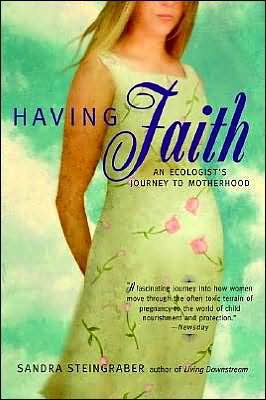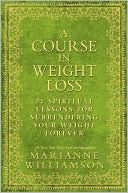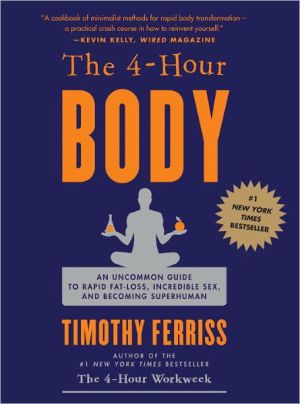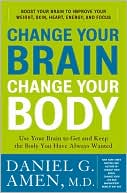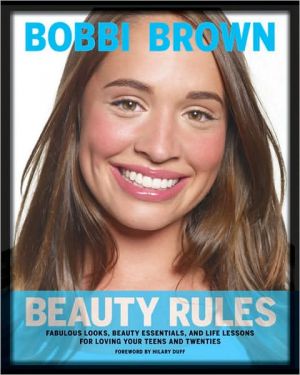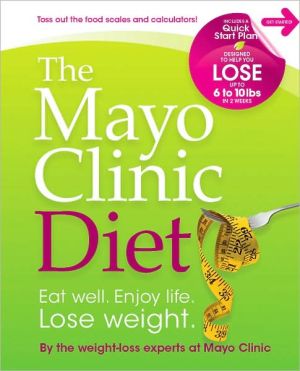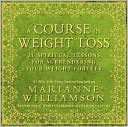Having Faith: An Ecologist's Journey to Motherhood
As an ecologist, Sandra Steingraber spent her professional life observing how living things interact with their environments. Now, 38 and pregnant, she had become a habitat—for a population of one.\ Having Faith is Steingraber's exploration of the intimate ecology of motherhood. Using her scientist's eye to study the biological drama of new life being knit from the molecules of air, food, and water flowing into her body, she looks at the environmental hazards that now threaten pregnant...
Search in google:
Both a celebration and a call to arms, this powerful book is the story of one human birth and the frightening ways we are now putting this miraculous process at risk Brain Child With the ear of a poet...Steingraber weaves the personal and the political in a startingly fresh, wholly convincing way.
Egg Moon\ In early April the silver maples are knobby with buds, and I quit sleeping. The robins wake me first, singing their slurred triplets over and over into the gray air. Then come the cardinals with their loud and liquid phrases, which, as a world-weary teenager, I heard as insightful commentary: To wit, to wit, to wit: what cheer? what cheer? To wit: what cheer? Finally, the mourning doves begin their soft question-1 lave who? who? who? just as light fills the win- dow.\ Of these three species, I consider doves the real harbingers of spring. Their flocks arrive sometime in early March. So do the robins, but some of them stay the winter as well; members of their ranks can be seen parading around front lawns on the occasional warm day in January. The corn-crunching cardinals are bona fide all-season residents, although, ecologically speaking, they arrived only recently, having extended their range into northern Illinois about a hundred years ago just in time to be appointed the official state bird. Illinois is also the winter home for a few species that, weeks from now, will migrate further north. The studious little insect-eater called the brown creeper is one. Creepers are bark-colored and mostly silent, but they can be identified easily by their work habits. They spiral methodically up the trunk of a tree, stopping to chisel spider eggs out of the crevices. When they get to the top branches, they fly down to the base of the next tree and spiral up again. It goes on like this all day-fly down, spiral up, fly down, spiral up. One has been foraging all winter in the scrim of trees that lines the alleyway. Nuthatches also pry insects out of tree bark but bring a whole different approach to the task. They race upside down while laughing weirdly to themselves. They, too, will soon be leaving for points north.\ One morning, in the middle of a predawn testimony to the mirthfulness of robins, I hear fluttering right outside the bedroom window. I lift the blind, expecting to see either a creeper or a nuthatch. Instead, a trio of tiny olive-green birds stares back at me. One hops closer, blinks, then bobs his head, the top of which is painted bright pink.\ "Well, who are you?"\ As if in answer, the bold one bows to show me again his splendid little cap. Then more fluttering and prancing around at the ends of the maple branches. Then all are gone. I know I won't sleep again until I can identify them, so I pull back the blankets and pad out to my study. Somewhere in the stack of boxes on the far wall is my bird book. As I'm pulling boxes down to find it, I'm aware of my belly-harder now and rounder, not just thicker. The window on this side of the house is still dark enough to be a mirror, and, backlit, I can see an obviously pregnant body through the thin white cotton of my nightgown. "Who are you?" I ask for the second time before sunrise.\ I make a good guess with the boxes, and find my grubby field guide to the birds wedged between two stacks of textbooks. I start flipping through the section on songbirds. It doesn't take long. There is only one olive bird with a pink spot on its head, and it is famous both for its fearlessness and for fluttering around at the ends of twigs: the ruby-crowned kinglet.\ The next morning there is a new song in the mix-a thin little violin voice calling Old Sam Peabody, PeabodyO.with a plaintive fade-out at the end, as if further searching would be futile. This is a white-throated sparrow, a bird I know by heart. I peer out the window to see if I can locate it. Instead, I find the maple branches full of kinglets. Dozens of them, all tipping their caps and bouncing on the bud-swollen twigs.\ There is the white-throat song again, even closer. And then again. Old Sam Peabody, PeabodyO.But I can't find the singer. I'm looking for inconspicuous black and brown feathers, a gray breast, a white throat. Nowhere\ "What have you done with Mr. Peabody?" I ask accusingly of the kinglets, but if they know anything, they're not talking.\ The next morning I wake at 3 a.m., absolutely convinced I hear a veery singing. I lie in the darknessyet undisturbed by robinslistening for it again. Nothing. Finally, I pad back to my study to check the bird guide. The veery, like the robin, is a thrush. Its call is officially characterized as "a descending flute-like song," but that description does not come close to capturing its otherworldliness. The first time I heard it-in a Minnesota pine forest-I froze to the spot. The veery's song is a wild, electronic, downward spiral of notes. "The song that will be playing when the alien spaceships land" would be a more apt description. According to the book, it's not possible that I just heard a veery. Its earliest known arrival date in central Illinois is April 20-two weeks from now. Also, it's a bird of deep woods, not backyards. Also, it doesn't sing in the dead of night. I must have been dreaming.\ I climb back into bed but can't sleep. In the fourteenth week of pregnancy, I've entered a new phase. Torpor has given way to a stated high alertness. I'm more watchful, and my sense of hearing seems to have become more acute, too. With my new powers of perception, I try listening for the sound of songbirds migrating.\ This isn't as far-fetched as it sounds. Serious bird scholars often go out on damp spring nights and listen for the faint chip chip chip of birds calling to each other as they pass by, a thousand feet overhead. Master birders can identify them to species just by the pitch and timbre of the distant flight notes. I'm nowhere near that good, but I try to imagine them out there anywaywarblers, flycatchers, thrushes, hummingbirdsfollowing the Mississippi Flyway north. Some of them are crossing the Gulf of Mexico tonight. Some are over Arkansas. Some are directly over my roof. Some are still in the mangrove swamps of the Caribbean and the mountaintops of El Salvador, waiting for a tailwind, judging the cloud cover.\ A lot of mystery still surrounds the migration of songbirds. For one thing, they only travel at night. For another, most are too small to wear radio transmitters. Therefore, most of what we know about their spring and fall travels comes from radar, which can only track groups, not individuals. Before radar, researchers estimated the intensity of songbird migration by moonwatching. This was a quaint but highly skilled practice that involved counting the number of birds seen flying across the face of the full moon. It required clear skies, a telescope, and elaborate calculations to account for angles of entry, altitude, and percentage of night sky occupied by moon. Moonwatchers made fantastical claims: 200 bird silhouettes crossing the lunar window in an hour meant that three million migrants had passed by Which meant that billions of birds were on the move during particular nights of the year. There was a lot of skepticism about these extrapolations until they were confirmed by radar operators.\ I must have dozed off because I suddenly become aware of robins caroling. And then Sam Peabody, Old SamO .I creep to the window ledge and let my eyes adjust to the dimness. Empty branches. No sign of the kinglets today, and no white-throated sparrows. Either I'm a truly incompetent birder or the tree itself is singing.\ Jeff stirs in the bed.\ "Sandra, what are you doing up? Are you worried about something?"\ "Hang on a minute.\ Silence. More robins.\ "Sandra? Honey?"\ "Shh. Just listen with me."\ Old Scam Peabody..\ "Did you hear that? I think we're having a son."\ On the night of the full moon, I am fifteen weeks pregnant and in Boston, having flown here for an amniocentesis. This was a huge decisionwhether to have the test at all, and if so, where. Actually, the where question was easier to answer. My so-called health maintenance organization refuses to pay for non-emergency health care outside of Massachusetts. And I am living five states away for an interval of time long enough to require routine prenatal care but not long enough to win local health insurance coverage. The result is that buying a plane ticket to see an HMO-approved gynecologist in Boston is cheaper than paying Dr. Dan to do an amniocentesis in Bloomington. Since I'm fond of my Boston gynecologistwho is my age and gender and is not predisposed to exam table jokesthis situation is somewhat a relief. But it does mean that I face the procedure alone. Buying another ticket for Jeff, on top of paying Dr. Dan for monthly check-ups, is out of our budget.\ The question of whether to do it at all is more complicated.\ Amniotic fluid is the ocean-like substance unborn babies float in. It offers fetuses buoyancy, protection from trauma, and oxygen. Like semen, amniotic fluid is comprised of two basic elements: living cells and the liquid they're suspended in. In this case, the cells represent sloughed-off fetal skin and bladder tissue. Amniocentesis means puncturing a pregnant uterus and aspirating about 30 millilitersone shot glass fullof amniotic fluid, which is...
Preface ..... IX Part I 1: Old Moon ..... 3 2: Hunger Moon ..... 11 3: Sap Moon ..... 33 4: Egg Moon ..... 65 5: Mother's Moon ..... 89 6: Rose Moon ..... 119 7: Hay Moon ..... 153 8: Green Corn Moon ..... 177 9: Harvest Moon ..... 205 Interlude ..... 233 Part II 10: Mamma ..... 237 11: Loaves and Fishes ..... 261 12: The View From the Top ..... 291 Afterword Notes Acknowledgments Index
\ Toronto Star[Having Faith] is invaluable...Its content informs as the language sings.\ \ \ \ \ EarthmattersLyrical...Read it to find out why [Steingraber] is being called the next Rachel Carson.\ \ \ Brain ChildWith the ear of a poet...Steingraber weaves the personal and the political in a startingly fresh, wholly convincing way.\ \ \ \ \ EconomistIntelligent, thoughtful and beautifully written, Steingraber's book...deserves to be called a classic.\ \ \ \ \ Mothering MagazineVery well written ... a persuasive call to action.\ \ \ \ \ Publishers WeeklySteingraber (Living Downstream) offers the commonest of stories how she got pregnant, gave birth and fed her baby in a most uncommon way. A cross between the quirkily thorough detail of Natalie Angier's science-writing and the passionate environmental advocacy of Rachel Carson, Steingraber's style would have been insufferably heroic if the pregnancy had been smooth, mind-over-matter. Instead, it's one long tale of everywoman's worst moments from the urge-to-pee problem to the terrible nausea of morning sickness followed by "round ligament pain" (these are "the bungee cords that anchor the uterus in place"), Braxton-Hicks contractions (which "rehearse the body for labor") and the general nuttiness of each trimester of pregnancy. Readers can identify with being ideologically opposed to, say, episiotomies, but then agreeing to one under the duress of childbirth. The climax, however, is not her daughter Faith's birth, but the dilemma over the safety of breastfeeding. The medical benefits of breast milk are compelling: it provides excellent nutrition and important immunities. But with rising environmental pollution, biomagnification implies that deadly toxins like DDT and dioxin will concentrate in human milk, the top of the food chain. The only answer: fight this pollution and make the world safer for nursing babies. With humor Steingraber compares childbirth to rocking a car out of a snowdrift or angling big furniture through a small doorway to leaven the scientific forays, this is a positively riveting narrative. Parents-to-be or anyone concerned with environmental pollution will want to read and discuss this and act. (Nov.) Copyright 2001 Cahners Business Information.\ \ \ \ \ Library JournalAccording to many popular guidebooks, pregnancy, childbirth, and parenting are happy experiences that proceed smoothly to bliss and contentment. Wolf and Steingraber beg to differ. Both feminist writer Wolf (The Beauty Myth) and Steingraber (Living Downstream: A Scientist's Personal Investigation of Cancer and the Environment), an ecologist at Cornell University, feel that consumer guides do not offer women enough information about the reality of the birth process. They argue that childbirth preparation classes make medical intervention seem harmless, normal, and expected. This leads women to stop trusting themselves and their bodies, allowing physicians to take control. But while the two authors agree about some issues, their respective books look at their own pregnancies from different points of view. Wolf focuses on how the psychological and social aspects of pregnancy and impending motherhood changed her sense of self. Coming from a generation of women who identify themselves as independent, equal, and entitled to power, she felt a sense of loss despite having wanted a child. She also began to reexamine some of her basic beliefs about a woman's right to choose and the balance of power in relationships. Wolf concludes that society neither values nor supports parents despite its emphasis on family values. Copyright 2001 Cahners Business Information.\ \ \ \ \ From The CriticsThe author of (1997) interweaves musings on her first pregnancy with information on new scientific discoveries and environmental threats to child development. Steingraber (Cornell U.) includes a list of further resources. Annotation c. Book News, Inc., Portland, OR (booknews.com)\ \ \ \ \ Kirkus ReviewsA terrifying tale of pregnancy and birth that sounds an alarm about the growing dangers of environmental toxins to parents and their babies. Biologist and ecologist Steingraber (Living Downstream, 1997) became pregnant at age 38, and determined to tell the story of the birth of her daughter, Faith, from an ecological point of view. Moving gracefully between hard science and tender personal anecdotes, she analyzes and explores the effects on her developing baby of the uterine environment, a "habitat . . . for a population of one." Describing studies on the development of the embryo, in which all the body parts are assembled and ready to grow by about week ten, her concentration on this "fantastical" process is interrupted by morning sickness. Research reveals that nausea in pregnancy remains a female mystery, like PMS and hot flashes, because "the tools of medical research have never been fully deployed to demystify it." Nor has research moved quickly to examine damage to the fetus from a deteriorating environment. For instance, the famously protective placenta is not a barrier against damage caused by pesticides, nicotine, PCBs, and other chemicals. A long and moving section on babies born with gross birth defects as a result of mercury in the food chain in Minamata, Japan, and the resistance of both government and industry to remove it, illustrates a recurring theme: that we live in a society that doesn't know enough or care enough about fetal health. Steingraber carries her concerns past delivery (complaining in passing about the emphasis on medical intervention-like routine episiotomies-in childbirth) to breastfeeding. The rewards are undeniable, but the risks are growing ascontaminants in the environment increase, finding their way to mother's milk and affecting, in particular, the further development of the baby's brain. An afterword offers a list of organizations active in struggling for a healthy environment and reducing birth defects. A convincing case that the increasing numbers of babies born with barriers to optimal development are a consequence of environmental insults. Should send parents and would-be parents to the barricades. Author tour\ \
